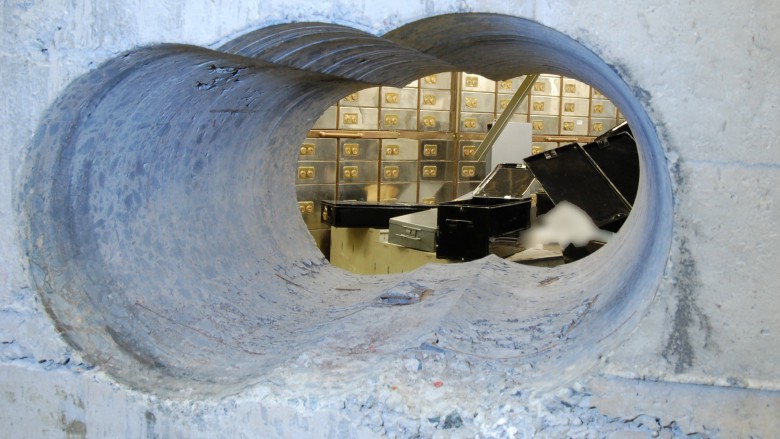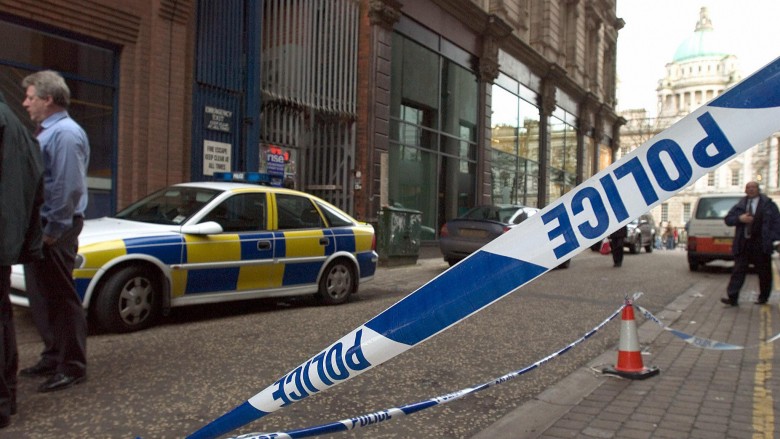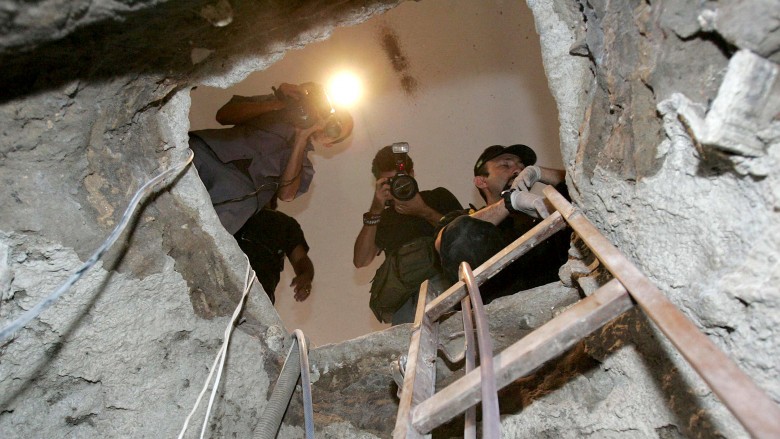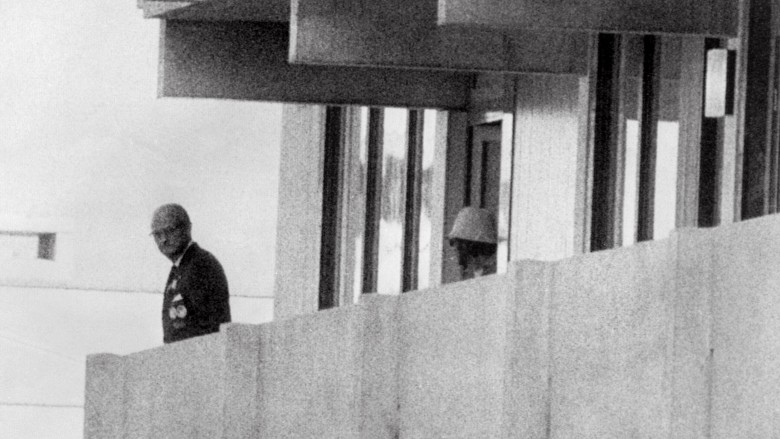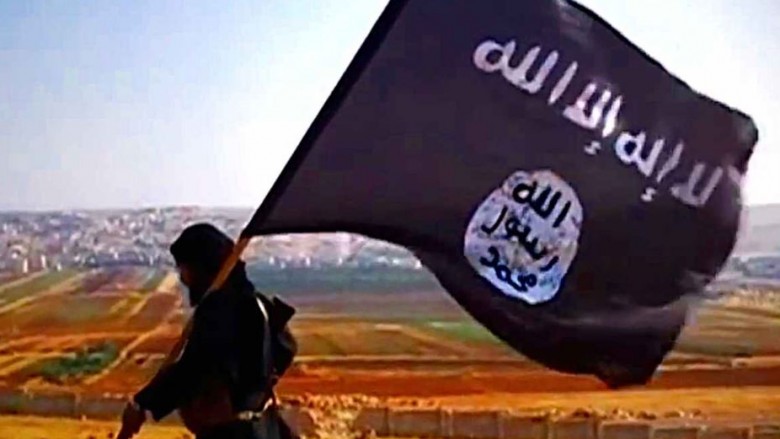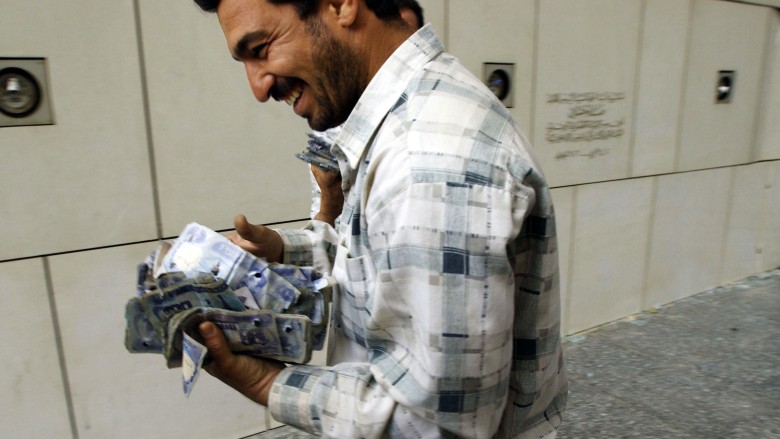Biggest Bank Robberies In History
Being a mastermind bank robber isn't all crossing the state line and hornswoggling overweight sheriffs with your bestest moll on one arm and a tommygun on the other. That said, real bank robberies can be just as interesting, especially when they involve the biggest, baddest heists of all time, such as ...
2015 Hatton Garden Heist, London. Amount Taken: £25 million ($31.3 million)
If you're a hotshot Hollywood producer (and if you are, give us a call — we've got a great idea about a superhero who is half-man, half-puffin, and all awesome), you could find far worse source material for a whimsical crime caper than the Hatton Garden Heist. In 2015, a whole bunch of London's baddest criminal grandpas got together for one last job. After some presumably seriously chirpy cockney banter, the thieves hatched a plan to tunnel into the Hatton Garden Security Deposit Building over Easter Weekend, and make off with the loot.
Incredibly, none of the guards on duty seemed to hear the scraping noises or approaching sounds of cheerful, Dick van Dyke-esque singing. The thieves managed to snatch so much gold and jewelry, their swags were bursting at the seams. The total take of this once-in-a-lifetime haul? Twenty five million British pounds ($31.3 million). It was the biggest British robbery in over a decade. One unlucky woman alone lost £7 million ($8.7 million) worth of gold in the raid. Although the British press originally reported a figure of £14 million snatched, it was later revised upwards, until it hit the crazy-high figure you can see above.
At the time of this writing, the thieves have mostly been caught, although the trial is still ongoing. Oh, and if you thought this sounds like a movie in the making, you're right. Michael Caine, Ray Winstone, and Michael Gambon (AKA Dumbledore) have already signed up to take this cheery heist to the silver screen.
2004 Northern Bank Heist, Northern Ireland. Amount taken: £26.5 million ($33.2 million)
The cost of the 2004 Northern Bank heist in Northern Ireland was nearly so much higher. It came at a time of extreme tension in the restive region, when the Good Friday Peace Agreement was on the verge of collapse. So when a bunch of criminals calling themselves the Provisional IRA knocked over one of the UK's biggest banks, and the government accused republican political party Sinn Fein of protecting them ... you can see how this nearly spiraled into what we'll call "Defcon Nightmare Horror".
The story of the heist itself is already twisted enough as it is. A few days before Christmas, policemen turned up at the doors of Northern Bank's two top executives. Once inside, they drew their guns, declared – surprise! – that they were actually criminals, and gave the executives a stark choice: let us into the bank, or we'll shoot your loved ones. Since real life, tragically, doesn't work like a Liam Neeson movie, the executives complied. The next day, they went to work as normal, only to stay behind after closing. An hour later, they let the robbers into the vault and watched in impotent misery as the thieves loaded up their van with over £26 million ($33 million) and drove off into the night.
To make matters worse, no one has ever been brought to justice. The executives' families were spared, an investigation found insufficient evidence to finger the IRA, and justice was never done. All that moolah is still out there somewhere, presumably funding someone's lifestyle of non-stop champagne, hookers, and bathtubs filled with caviar.
2005 Heist in Fortaleza, Brazil. Amount taken: $69.8 million
Skip back in time with us to Fortaleza, north Brazil, circa 2005. The sun is shining. The sea is a brilliant, dazzling blue. All the local girls and guys are much more photogenic than either you or we will ever be, and a group of shady "landscape contractors" have just set up shop beside the Central Bank. They seem to spend all their time whistling nonchalantly and hiding little piles of dirt they swear totally didn't come from illicit tunnel digging.
In short, it's a typical scene in a typical Brazilian city ... until the day comes when the contractors suddenly disappear, and the bank opens its vaults to find 3.5 tonnes of paper money missing and a great tunnel leading off to sweet, sweet freedom. Oops.
The subsequent investigation was the very definition of the word "bungled." Only 20 million reais (Brazilian money) were relocated, and that's out of 160 million reais initially stolen. Suspects kept turning up dead, and no one ever really figured out who was behind it, or what they did with the money. This is why you never hire a contractor for anything.
2016 Bank of Bangladesh Hack. Amount taken: $101 million
It's 2017. Everyone, including your grandma, knows by now to take cybercrime seriously. Sadly for Nigerian princes everywhere, unsecured passwords, phishing, and gullibility just don't cut it anymore. Unless you work for the Bank of Bangladesh, that is. In February 2016, the bank allowed a group of hackers to seize control of their systems. By the time they'd wrested control back, $101 million had been spirited off into the digital sunset, never to be seen again.
That the hackers could do this is due to something that's equal parts important and super-boring: SWIFT. This is a yuge network of people based in banks across the world, who use its transfer systems to safely shift billions of dollars worldwide daily. At least, it's safe until a bank employee's SWIFT details fall into nefarious hands. When the hackers accessed the Bank of Bangladesh, they used four stolen SWIFT codes to make the bank fire off repeated requests to the Federal Reserve Bank of New York, asking for millions to be sent to anonymous bank accounts in Asia. The bank blocked 32 requests, but it authorized four.
That alone was enough to send $101 million shooting off into untraceable accounts, but wait until you hear about the very-nearly-successful fifth request. That baby was for $1 billion, and the bank was right on the verge of okaying it ... until they found a single spelling mistake on the transfer form and blocked it. Thanks to their poor grasp of English, the hackers made off with less than a tenth of what they potentially could have. This, kids, is why you take grammar class seriously.
1976 British Bank of Middle East Raid. Amount Taken: $27.5 million ($125 million in today's money)
During Lebanon's 1975-1990 civil war, over a quarter of a million people were killed, in a country with only 2.5 million residents to begin with. Another million fled abroad as refugees. Oh, and the carnage also provided cover for the Palestinian Liberation Organization (PLO) to pull off the biggest bank heist in Middle Eastern history.
You may recognize the PLO, for good reason. The PLO was the parent organization of the Black September terror group that murdered 11 Israeli athletes at the Munich Olympics. One of their branches once took an entire school hostage, and killed a whole class of teenagers. They seized airliners, cruise ships, hotels and buses, usually murdering any Israelis or Jews they found. And a whole lot of these (and other) activities were funded by this one 1976 raid on the British Bank of the Middle East.
Knocking over Lebanon's richest bank was remarkably easy. The PLO simply exploded a bomb big enough to remove most of one wall, then sent professional locksmiths scuttling through to open the vault. That done, they hauled away so many security deposit boxes, PLO leadership had to send 18-wheeler trucks to help them carry it all. The total cost to the bank was £22 million ($25 million), closer to £100 million ($125 million) in today's money. But the total cost to the world from having a well-financed terror group causing havoc for the next two decades? Incalculable.
1983 Brinks-MAT Robbery, London. Amount Taken: £26 million ($140 million in today's money)
Brinks-MAT is the heist professional thieves have wet dreams about. In 1983, a group of London criminals were let into a Brink's security depot by a mole posing as a guard. Once in, they doused all the other guards with petrol and threatened to set them on fire if they didn't open everything. Since "being fire retardant" isn't in most guards' job descriptions, the terrified men complied. The criminals had been expecting a £3 million ($3.7 million) haul — to their amazement, the guards opened a vault containing nearly ten times that amount.
There was so much gold bullion, the thieves could barely drive their getaway vehicle. Yet, despite their rear axle literally scraping along the road surface, they managed to vanish into the night. Crazy story, huh? Just wait till you hear the next part.
The aftermath of the robbery was marked by a series of scandals and decidedly-spooky events. First, there were the murders. Brinks-MAT may sound like the haul of a lifetime, but in many cases, those lifetimes turned out to be frighteningly short. Starting in the '90s, a "curse" (read: men with guns) started killing anyone involved in the heist. Seven people linked to the robbery have since turned up dead, all shot execution-style.
Second, there was the scandalous fate of the stolen money. So much gold was melted down, it's estimated that virtually every piece of British gold jewellery made after 1993 contains traces of Brink's-MAT bullion. As for the cash, that was all laundered by Panamanian company Mossack Fonseca, the guys at the center of the 2016 Panama Papers scandal, and the same guys who helped dictators, oligarchs, and all other sorts of bad dudes hide money they'd plundered from various nations. Nice work, guys.
2007 Dar Es Salaam Bank Robbery, Baghdad. Amount taken: $282 million
If you were living in 2007 Baghdad, you probably had more pressing things to worry about than what was happening in the Dar Es Salaam Bank, even if you were the bank's director. This was the height of post-war chaos, when the entire country was nothing but a collection of bombs going off, shootings being carried out, police repression, and more terror attacks than perhaps any other country has suffered in modern times.
It was thanks to this non-stop mayhem that one of the biggest, simplest robberies in history was able to be carried out. In the middle of a swelteringly hot July day, two security guards at the bank strolled into the vault, calmly loaded a quarter billion dollars into a security van, and drove off into bank heist history. They had no paperwork, no authorization, no excuse ... and no one challenged them. As you can see, an undeclared civil war can be kinda distracting.
The two guards managed to clear multiple army checkpoints, which has led people to wonder whether they might have been connected to the massively influential terror groups then controlling parts of the capital. It would certainly explain why the money (and the guards) have never been recovered. Then again, maybe they were just two amiable chancers who are now relaxing on a beach in Brazil somewhere, having experienced all manner of whimsical adventures on their way to tropical paradise. We know which version we prefer.
2015 Global Bank Hack, the world. Amount taken: $300-$900 million
For two years, no one at the dozens of major banks across the US, Europe and Japan had any idea their systems had been compromised. Malware had slowly been introduced into their computers, where it lay dormant, buying time, like a digital snake, sheltering in the tall grasses of a badly-mangled metaphor. Then, in 2015, the whole lot activated. In the blink of an eye, somewhere between $300 million and $900 million vanished into dummy accounts across the globe. With the stroke of a key, hackers had just pulled off one of the biggest heists in global history.
The money came from over 100 banks scattered across 30 different nations, coming in the form of multiple, small transactions that hit each bank dozens of times. Some requests fired off only a few hundred dollars, while others topped out at $10 million. Each was individually small-fry. Taken together though, they amounted to a tsunami of cash flowing out the banking system, and into the pockets of some of the most-brutal criminal gangs on Earth.
The craziest part? No one at any of the banks hit bothered to alert the authorities. It wasn't until cybersecurity firm Kaspersky was called in to assess a hit on a Ukrainian bank a year or so later, that the story got out to the wider public. As a result, we don't actually know how much was stolen. Could be a few hundred mill, could be nearly a billion bucks. Dr. Evil would be so proud.
2014 ISIS Bank Raids, Syria and Iraq. Amount taken: $1 billion
The funds needed to set up a murder-state of unprecedented horrors came from ISIS's unstoppable rampage across Syria and Iraq in the summer of 2014. Hard as it is to credit now, the massive assault ISIS pulled off initially began as a plan to take a suburb of Mosul. Then the Iraqi Army cut and run, leaving their weapons behind. By the time ISIS's frontlines stopped moving, they'd taken a swathe of territory across two countries equivalent to the size of Belgium (or slightly bigger than Massachusetts, whichever's easier for you to visualize). Among all that territory was dozens of towns and cities ... and more banks than you could shake a tank at.
You can probably guess what happened to all the money stored in those banks. Yep, it went right into keeping the ISIS terror machine spinning. While we don't know exactly how much was swiped (due to it happening inside the territory of a newly-declared terror state that wants us all dead in hideous ways), a 2015 CNN report, backed up by US government sources, estimated the total take at around $1 billion. Yep ... that'll buy you a lot of bombs.
2003 Central Bank of Iraq "withdrawal." Amount taken: $1 billion
Hours before American bombs started landing on central Baghdad, Uday Hussein calmly and quietly pulled off the biggest bank heist our world has ever seen. The absolute worst of Saddam's awful sons (his hobby was beating and raping strangers, and he once stabbed a man to death with an electric carving knife when he got bored at a party), Uday was top of the list for capture when the US invasion started, and he knew it.
So he decided to escape, and to do so with the financial clout needed to live at large forever. In an Iraq that had been at the mercy of Saddam Hussein for generations, this was easy enough to do. Uday was more feared than even his father, so he simply drove to the Central Bank of Iraq and demanded they hand over the money. How much? They asked. Everything, he said.
Despite his only documentation being a hastily-scrawled note by his father, Uday was able to load the entire contents of the bank vault into two large trucks. Then he vanished off into the desert, dumping the loot at strategic points around the soon-to-be war-torn nation. As far as Uday was concerned, he was going to live off this stash forever.
You'll be pleased to know that didn't even come close to happening. Uday was killed by a vengeance-sized whirlwind of US bullets and missiles in 2003, and around two-thirds of the loot was later recovered. However, at least $300 million is still missing, now believed to be in the hands of possibly the only people on Earth worse than Uday: the maniacs running the nonstop horror show that is ISIS. Geez, what a bum note to end a lighthearted article about cold-blooded criminal behavior on.

